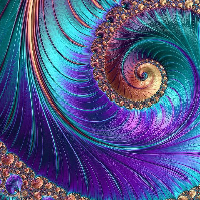private final int MAX_ITER = 570;
private final double ZOOM = 150;
private BufferedImage I;
private double zx, zy, cx, cy, temp;
public Mandelbrot()
{
I = new BufferedImage(getWidth(), getHeight(), BufferedImage.TYPE_INT_RGB);
for (int y = 0; y < getHeight(); y++)
{
for (int x = 0; x < getWidth(); x++)
{
zx = zy = 0;
cx = (x - 400) / ZOOM;
cy = (y - 300) / ZOOM;
int iter = MAX_ITER;
while (zx * zx + zy * zy < 4 && iter > 0)
{
temp = zx * zx - zy * zy + cx;
zy = 2.0 * zx * zy + cy;
zx = temp;
iter--;
}
I.setRGB(x, y, iter | (iter << 8));
}
}
}
public void paint(GreenfootImage gfim)
{
gfim.drawImage(I, 0, 0, this);
setImage(gfim);
}
}





